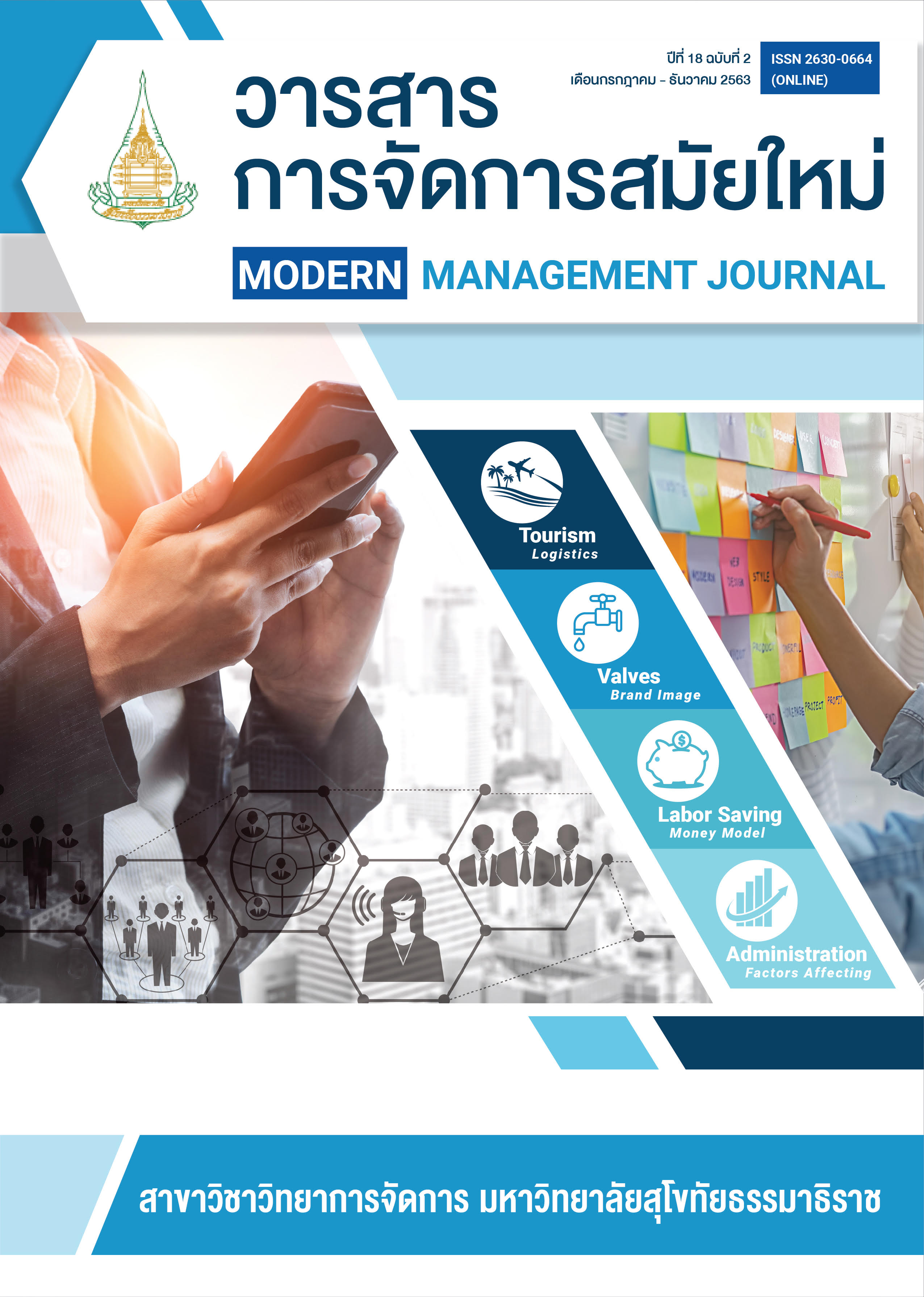Causal Relationship of Factors Affecting Readiness to be a High Performance Organization: A Case Study of Nakhon Si Thammarat Rajabhat University
Keywords:
The Factors Affecting, The Change Readiness, High-Performing OrganizationAbstract
The objectives of this study are: 1) To study the level of factors affecting the readiness of being a high-performance organization in the case of Nakhon Si Thammarat Rajabhat University 2) To study the causal relationship of factors affecting the readiness of the organization as a competency High case study in Nakhon Si Thammarat Rajabhat University The researcher conducted quantitative research. Population used in education Personnel of Nakhon Si Thammarat Rajabhat University, numbering 766 people, due to the analysis of the data by path analysis, the size of the sample group must be at least 300 samples. As for the next names, there will be 3 names apart, until the number of samples needed is 300 people.
The research results structural equation model was found that Being a high-performance organization, there are factors that affect the readiness of the personnel, namely learning the competence of the personnel. And the availability of changes. The modified structural equation model (Modified Model) was consistent with the empirical data. Considering the chi-square (() statistic, 237.42 free degrees (df) is 204, the p-value is 0.05431, the relative chi-square (
/ df) is Considered 1.298, the Consistency Index (GFI) was 0.990, the AGFI value was 0.946, and the RMSEA value was 0.0235, The results of hypothesis testing showed that learning, communication, and change readiness had direct influence on being a high-performance organization. Case Study of Nakhon Si Thammarat Rajabhat University Was statistically significant at the level of 0.05, with predictive power of 0.34%.
References
Brokaw, G. S., & Mullins, J. M. (2006). In Pursuit of High Performance-Part I in The Public Manager. The Quarterly for Practitioners, 35(4).
Buytendijk, F. (2006). Five Keys to Building High Performance Organization. Business Performance Management Magazine, 24.
Comrey, A. L., & Lee, H. B. (1992). A First Course in Factor Analysis (2nd ed.). New Jersey: Erlbaum Tabachnick and Fidell (2001).
Cummings, T. G., & Worley, C. G. (2005). Organization Development and Change (8th ed.). Ohio: Thomson South-Western.
De Waal, A. A. (2007). The Characteristics of High Performance Organization. Business Strategy Series. 8(3).
Dtirakanon, S. (2005). Research Methods in Social Science: A Guide to Practice (Type No.5). Bangkok: The Press of Chulalongkorn University. [In Thai]
Eul-Im, O., Gu, K., & Young-Tae, B. (2009). The Effects of Organizational Learning on Organizational Change and Performance in Local Public Agency. Korean Society & Study on Administration, 25(6), 55.
George, J. M. & Jones, G. R.. (2005). Organizational Behavior. (4th ed). New Jersey: Pearson Prentice Hall.
Holbeche, L. (2005). The High Performance Organization: Creating Dynamic Stability and Sustainable Success. Oxford: Elsevier/Butterworth-Heinemann.
Jitarree, D. (2004). Factors Affecting the University Faculty to Teach Research Service and Community Service. Educational Research News, 17(3). [In Thai]
Jupp, V., & Younger, M. P. (2004). A Value Model for the Public Sector, Outlook Journal, February.
Kanjanawasi, S. (2001). Selection of Appropriate Statistics for Research (4th edition), Bangkok: Boonsiri Publication. [In Thai]
Laksana, S. (2001). Research the Curriculum and the Teaching Process. Bangkok: Sukhothai Thammathirat Office of the FDA. [In Thai]
Lorsuwannarat, T. (2005). Knowledge Management in Business Organizations. Bangkok: Thammamon Publication. [In Thai]
McClelland, D.C., (1973). Testing for Competence Rather than Intelligence. American Psychologist, 28(1), 1-14
Piwngern, M. (2011). The Relationship Between Transformational Leadership and Effectiveness of the Administration of the Sub-District Administrative Organization in Sakon Nakhon Province. Thesis: Sakon Nakhon Rajabhat University. [In Thai]
Ratsameechoht, J. (2010). Human Potential Development Approach with Competency Based Learning. Bangkok: Siriwatana Interprint. [In Thai]
Robbins, S. P. & Coulter, M. (2008). Management. New Jersey: Prentice Hall.
Sinlarat, P. (2006). Creative Education and Productivity. Bangkok: Chulalongkorn University Press. [In Thai]
Stone, R. J. (1998). Human Resource Management. (3rd ed.). New York: John Wiley and Sons.
Wichianpanya, P. (2002). Fundamentals and Application Management. Bangkok: ExportsNet. [In Thai]



